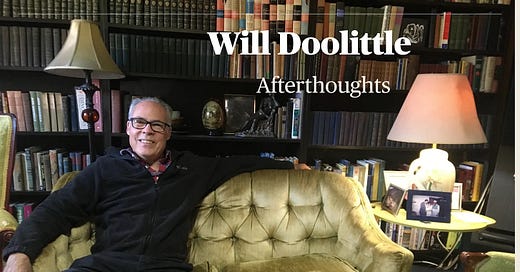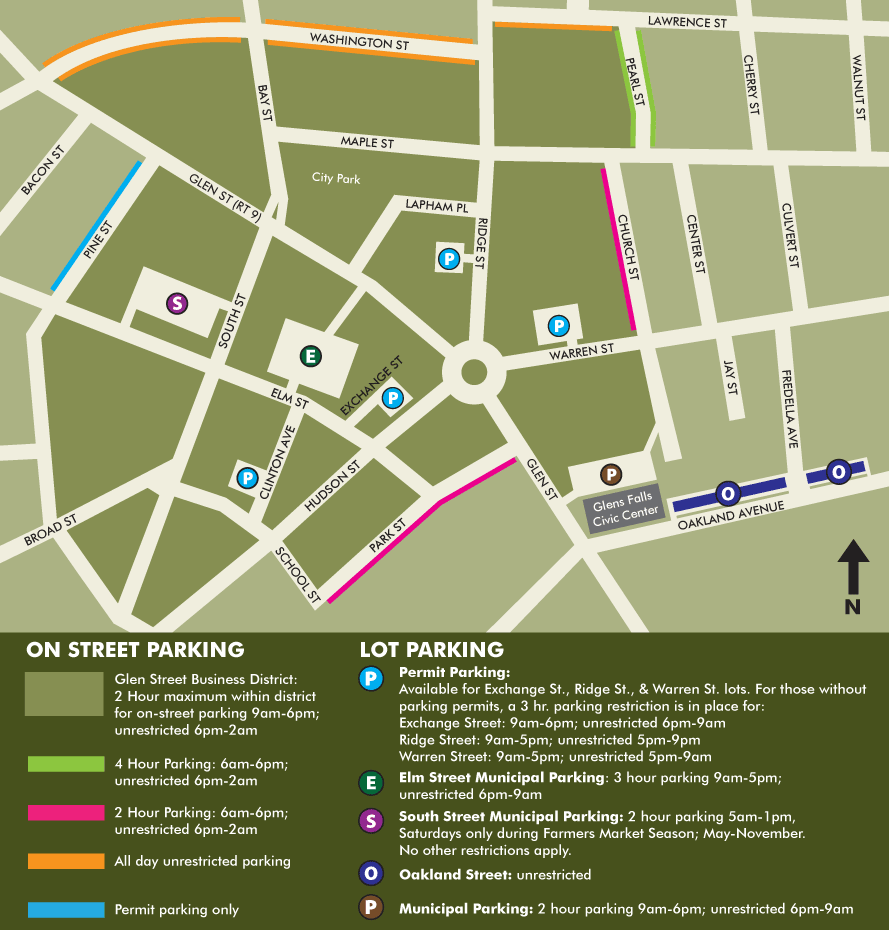I don’t have to wait for the completion of the Glens Falls parking study — I know I don’t want a multi-story parking garage erected on top of the Elm Street parking lot.
A parking lot need not be unattractive, and the Elm Street lot has potential for being a pretty, lively space filled not only with parked cars but medians with flowers and small trees, outdoor seating at the back entrances to eateries and even, perhaps, public restrooms.
Among all the bad ideas in the 2004 study that recommended a parking/transportation hub for the lot — a study that has been re-embraced by current city officials — public restrooms stand out as the single good one. The restrooms don’t have to go in the Elm Street lot, but having public restrooms somewhere downtown would be a great feature for a city trying to promote itself as a destination for pedestrians, where people can park and then walk around, admiring the historic architecture, watching the squirrels in the park and eating at one of the many outstanding restaurants.
A blockish, bland parking edifice larger than most of the downtown buildings should, in a small city like ours, be located away from the business center, not inside a square formed by the city’s busiest streets.
How far backward should the city bend to accommodate the Bonacio Construction company, which has plans to put up several new buildings on South Street?
If destroying the ambience of downtown with a behemoth built for parking is the price of getting Bonacio to come to South Street, then it’s too high.
The best development occurs organically, as the wonderful, varied and thriving restaurant scene has in Glens Falls. Other small businesses, like the Minky Mink clothing boutique and Rude Betty gift shop, have also figured out how to thrive, cultivating a local clientele over years of operation.
When large projects with government backing are imposed on a community from above, they frequently collapse of their own weight. I’m not predicting the Bonacio projects will fail, but they should be able to provide their own parking, which will help ensure they’re built to the scale of our very small city.
The Elm Street lot can now fit about 94 cars, while the five-story garage proposed in the 2004 study would fit about 514.
But if you’re willing to walk for a minute or two, you can still find many available parking spaces any day of the week in downtown. Go out Glen Street north of Sherman; or Maple, east of Ridge; or Ridge, north of Maple; or Warren, east of the traffic circle; or Hudson, west of the circle. If you can manage walking a block uphill, the lot on Oakland, behind the Civic Center, always has open spaces.
Until the city gets so prosperous you can circle downtown without finding a place to park — and hallelujah if that happens! — another parking garage will be an ugly superfluity.
It will be expensive, too — not only to build but to maintain — so fees will probably be charged, while now, parking in the Elm Street lot is free. Free parking is a convenience and a way to welcome visitors to our downtown. We should avoid discouraging with fees people who want to visit and shop here.
All these arguments against the project, and I haven’t even touched on the transportation hub!
What is wrong with the existing bus station? It’s easy for buses to get there from the Northway — easier then it would be for them to turn up Elm and go a block farther, then maneuver around in a lot already crowded with pedestrians and drivers entering and exiting a parking garage.
Most of the city’s streets are narrow and tricky for buses, with the notable exception of Hudson Avenue, where the bus station is now.
The Elm Street lot as it stands now could use some attention. It’s unclear, for example, which direction you’re supposed to be going as you hunt for a spot. It would be wonderful to enlist the businesses that border the lot in an effort to spruce up their back entrances.
But piling hundreds of tons of cement ramps and platforms on top of the lot is not the answer. The city needs another parking garage as much as it needs another Civic Center.
Readings
I saw that Ken Burns in an interview praised Willa Cather and asked why, when the subject of the great American novel is raised, her books — such as “O, Pioneers!” and “My Antonia” — aren’t put forward along with old favorites like “Moby Dick,” “Huck Finn” and “The Sound and the Fury.” And why do writers such as Faulkner and Hemingway (whose novels are all set overseas, which may, in some people’s minds, disqualify them as “great American novels”) loom larger than Cather in the canon of American writers? I don’t know why (could it be that her reputation was hurt by her probably being a lesbian?), but I agree with Burns and prefer the books of hers I’ve read — “My Antonia” and “Death Comes for the Archbishop” — to any of the several I’ve read by Faulkner and Hemingway.
Faulkner and Hemingway both have self-conscious styles that intrude on the stories they’re telling, while Cather’s prose strikes a perfect, beautiful balance between spare and ornate. “Death Comes for the Archbishop” is one of my favorite books, a thrilling and, at times, hallucinatory tour of the west in the mid 19th century that tells the story of the lives and friendship of two priests. Cather mixes fictional and historical characters, and although she features the priests’ attempt to establish a Catholic diocese in the New Mexico territory, the book is more of a road novel than anything else, an “On the Road” on donkeys with two Catholic priests instead of in cars with Sal Paradise and Dean Moriarity.






This is what happens when the local Big-Fish-in-the-little-pond throws his weight and money around: the uglification of a pretty little city.
I totally agree! Gardens, or something, no parking garage!